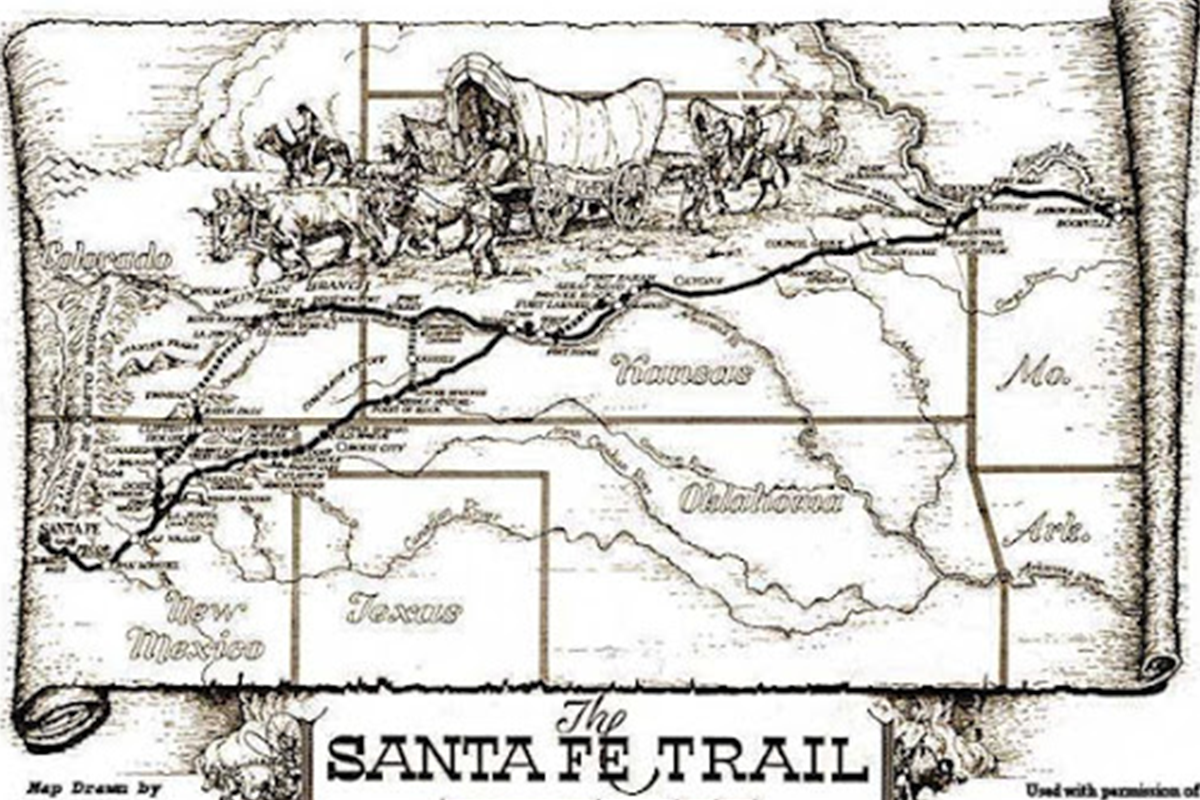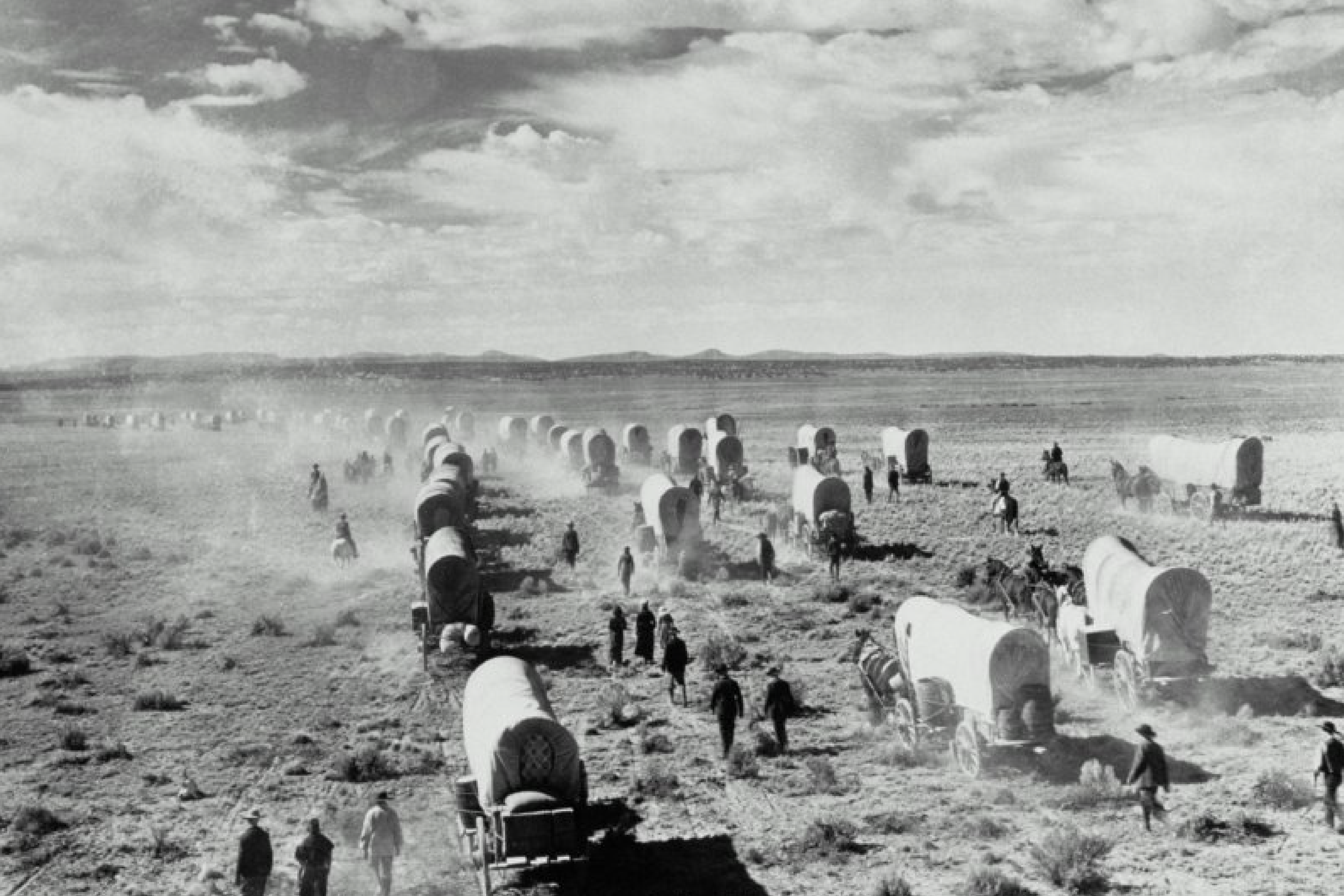
At this time St. Louis was a raw, crude, boisterous city of some 4,600 people made up mostly of French, Indians, Spanish, Germans and Americans. Actually, the first jumping-off point was Franklin, a little town on the Missouri River. High waters soon washed it away so Westport and Independence on the western border of Missouri rose to prominence as the gateway to the vast western terra incognita.
In 1824, Becknell led another party of 25 wagons, $30,000 worth of goods and 150 mules and horses. It was the first great caravan to make the trek over the Santa Fe Trail. They returned a few months later with over $180,000 in silver coin and $10,000 in fur.
America was hard up for hard currency as the rich silver and gold discoveries were some three decades into the future. The wagons heading from Missouri to Santa Fe were veritable Wal-Marts on wheels bringing goods in Pittsburg and Murphy wagons capable of hauling up to four tons.
The Mexicans needed these goods and Americans needed silver so was a win-win situation for both countries. Except for a brief interruption during the Mexican War in the 1840’s the slow, puddin’-footed oxen plodded up and down the trail until the arrival of the railroad in the 1880s.
The Santa Fe traders were merchants rather than adventurers so they were easy marks for some of the Plains Indian tribes. In 1833, the First United States Dragoons was established to escort both Mexican and American traders. This marked the birth of the U.S. Cavalry.
The Dragoons escorted the traders to the border at the Arkansas River in Colorado where the caravans were picked up by Mexican soldiers and taken to Santa Fe. The procedure was reversed when the caravans were going in the opposite direction.
Indians weren’t the only ones who made the trip precarious. The country was literally crawling with pesky rattlesnakes slithering through the grass. Worse was waking up in the morning to find one had crawled into your blanket during the night.
Accidental gunshot wounds was another problem encountered by these merchants who had little experience with firearms. Kit Carson, in his first trip west on the Santa Fe Trail described a primitive amputation where a knife, saw and a hot iron to sear the wound were the medical instruments. It might be added the surgery required several assistants to hold the patient down while the operation was in progress. This was before sulfuric ether was first used by Boston Dentist Wm.T.G. Morton on October 16th, 1846. Strong whiskey was an important ritual prior to surgery for both patient and “surgeon.”
Some of the wagons went down the Rio Grande to El Paso del Norte and Chihuahua City while others followed the Gila Trail to Tucson and on to California. The trade had become a major enterprise between the two nations.
Many of the American traders never returned to their homeland but chose to remain in the Southwest. A great number married Mexican women, raised families and formed a blending of the cultures forming dynasties that is still a characteristic of the area today. Others headed off to the mountains on some new adventure.
For better or worse, from the Mexican point of view, the Americans were here to stay, becoming a permanent fixture in the great Southwest.
On July 4th, 1879 the Santa Fe Railroad arrived in Las Vegas and February 9th, 1880 the railroad, on an 18-mile spur line from Lamy Station, arrived in Santa Fe. On April 9th1880 it arrived in Albuquerque, an event that effectively marked the end of the Santa Fe Trail.





